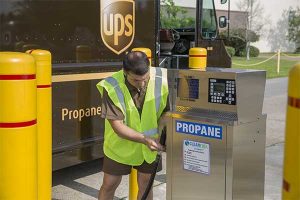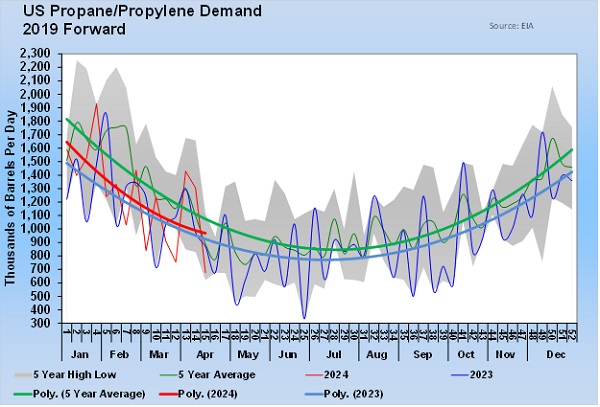UPS increases commitment to alternative fuels
UPS announced new sustainability goals to add more alternative fuels and advanced technology vehicles, including propane, to its global fleet.
These goals support UPS’ commitment to reduce its absolute greenhouse gas emissions from global ground operations by 12 percent by 2025, the company says.
“By 2020, a quarter of our annual vehicle purchases will be alternative fuel or advanced technology vehicles. By 2025, alternative fuels will supply 40 percent of our total ground fuel needs. All of these initiatives will drive UPS toward our vision of a zero-emissions future,” David Abney, chairman and CEO of UPS, says.
This new goal is part of an ongoing effort by the company to increase its sustainability. UPS says it has invested more than $750 million in alternative fuel and advanced technology vehicles and fueling stations globally since 2009.
According to the company, UPS used more than 97 million gallons of alternative and lower-carbon fuels in its ground fleet in 2016. In the same year, the company clocked 1 billion miles in alternative fuel vehicles. Its goal was to reach 1 billion miles by 2017, achieving it one year ahead of schedule.

UPS plans to have 25 percent of its fleet run on alternative fuels, including propane, by 2020. Photo by UPS.
The increase in alternative fuel vehicles has helped the company’s U.S. Domestic Package division avoid emitting 147,000 metric tons of carbon dioxide equivalent emissions since 2015, UPS says.
According to Tamara Barker, UPS’ chief sustainability officer, e-commerce activity raises demand for shipping services; yet, these shipments tend to be less efficient than business-to-business deliveries because drivers are making more stops and are often delivering only one or two packages per stop. This drives up the amount of miles driven and fuel used, which increases emissions. Thus, the push toward alternative fuel vehicles.
UPS uses its rolling laboratory approach to determine which alternative fuels and technologies work best in each situation. According to UPS’ Sustainability Report, propane and other lower-emission, petroleum-based alternatives are readily available and work well in North America. UPS has also determined that propane trucks are best for rural routes of over 100 miles. Because propane is more easily accessible in rural areas, refueling is easy.
UPS sees propane as having many benefits. According to the company, these include the fact that propane does not compromise a vehicle’s ability, fuel economy or drivability. It also allows for package cars to have a 200-mile range and no route limitations.
In 2014, the company invested $70 million in 1,000 propane autogas vehicles, which it initially deployed in California, Louisiana and Oklahoma. This was the company’s first large-scale movement toward propane in the U.S. The Propane Education & Research Council helped fund the project, and worked with the company on installing fueling stations.
The company has more than 8,300 alternative fuel vehicles operating globally. Of these, more than 2,300 are propane vehicles. It also has 55 propane fueling stations.
“Because of our size and scale, we know our commitments can shape markets, advance technologies and be a catalyst for infrastructure investments,” Abney says. “We rely on the ingenuity of our employees, suppliers and technology partners to help us reach goals that will transform the shipping industry and spur innovation.”















